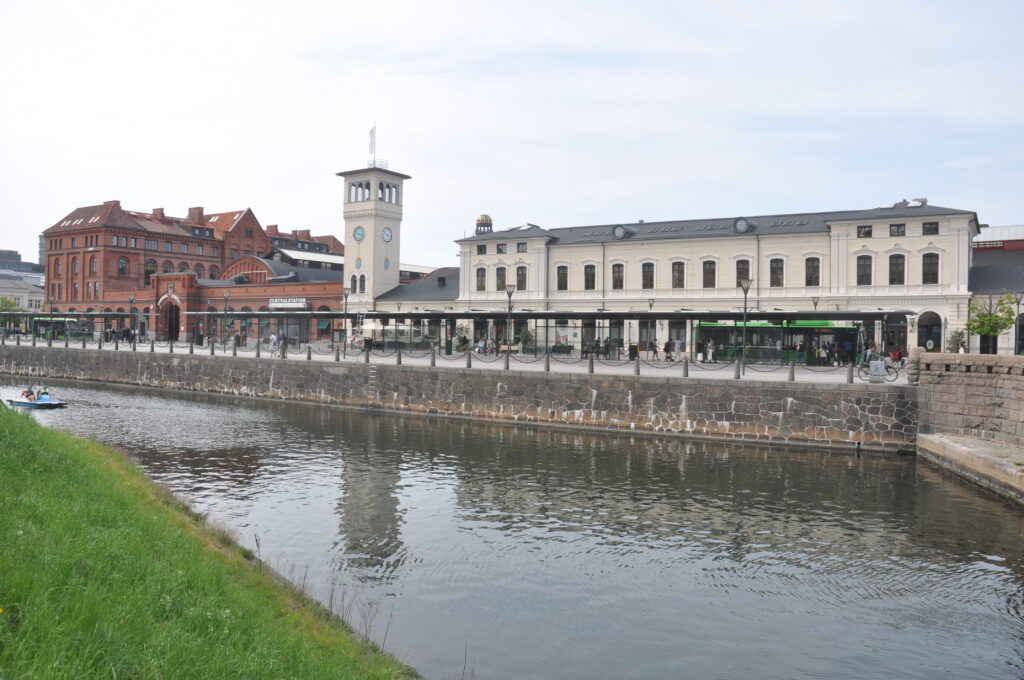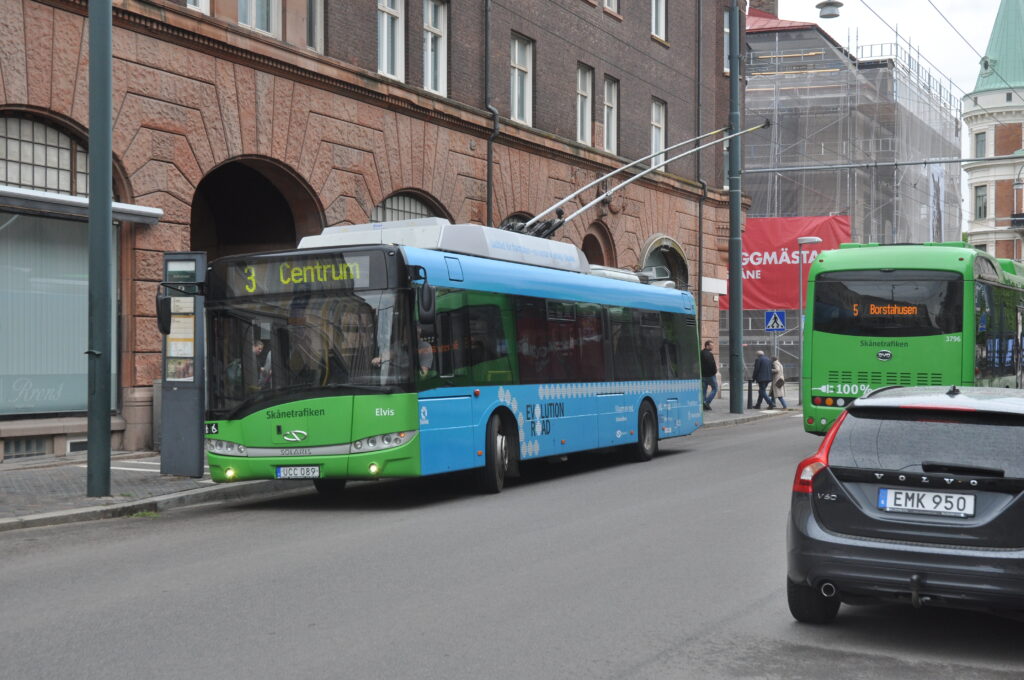Swiss Railways train in Zurich Station
Since the early 1960s there has been a train ferry between Puttgarden and Rodby across the Fehmarn Bight between Germany and Denmark. It is now being replaced by a fixed link and the rail lines on either side are being upgraded.

After a week in Lubeck we caught the rail replacement X85 bus to Puttgarden, which is operating while the fixed link is being constructed.The ferry to Rodby runs every 30 minutes, and on the German side it is only a short walk from the bus, which stops outside the closed station, to the boat. The fare is 10 euros.
At Rodby, which seemed rather less welcoming, we were presented with a bus stop with information only in Danish, although there was a notice explaining how to get onward travel information in English, if you had a smartphone. Neither of us did, which was to become an issue later. Fortunately, we managed to work out from the Danish information that the bus ran every 30 minutes to Maribo station, and in due course it did indeed arrive.
At Maribo, we needed to buy a rail ticket, but there was no ticket office – nor, it seemed, any staff at all – so a local resident helpfully showed us how to get a ticket from one of the machines. Unfortunately, by the time we had done this, we had missed the train, but as there is one every 30 minutes on the line to Nakskov, it was not too long for wait for the next.
A 2-car diesel unit took us to Nykobing, from where we had to change for the through train to Copenhagen: also diesel operated, although the electrification of this line seemed substantially complete.
After several days in Copenhagen, we moved on to Malmo, which proved to be well worth a visit. As well as exploring the city, we managed to get to Lund, for a ride on the tramway, and Landskrona, for a trolleybus ride on service 3 from the station to the harbour (which runs every 6 minutes). This was probably one of our best days – getting to see places slightly off the tourist trail, and enjoying lunch in a more traditional cafe-restaurant in Landskrona.

One thing we found was, seemingly, an absence of printed timetables in Denmark and Sweden. Not even pocket timetables from the Malmo booking office. At Malmo, we had to work out what the train service was by studying the departure indicators. This was not a problem for the journeys we made in Sweden, as trains were frequent (2-4 perhour), but we had a real issue with getting from Copenhagen to Germany: our 11.26 to Hamburg had been re-times to 11.00, and so we missed it. Lacking smartphones, we were unable to check in advance – especially as we had been staying in Malmo, not Copenhagen, on the night before our departure. In Germany, one can check the yellow sheets at main stations, but there did not seem to be equivalent provision in Copenhagen or Malmo.
We were not the only passengers to miss the 11.26. Fortunately, a very helpful member of DSBstaff in the information office wrote us out an alternative way to get to Cologne that day, and followed us to the train to hand the itinerary to the guard, who then passed it to us. We were directed to a train from Copenhagen to Esbjerg as far as Kolding, where we changed to a diesel multiple unit to Hamburg. This not only gave us a trip over the RendsburgHigh Bridge, but also an arm sniffing by Danish customs dogs at the border! From Hamburg, we were on the 18.17 loco-hauled train to Koblenz, which dropped us off at Koln Messe-Deutz station, which we had never used before – presumably to avoid reversing at the Hauptbahnhof.
The Ibis at Koln Hbf was good, and very welcome after our long day. We had a leisurely morning after breakfast before leaving the city at 12.42 for Brussels and London.
After a very enjoyable fortnight passing through 6 countries, a return to provincial UK sadly reminded us just how far behind most of northern Europe Britain now is, in terms of quality of the public realm, non-co-ordination of buses and trains, rail electrification and so on.
June 2023 by Philip Bisatt and Cathy Gear







